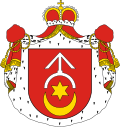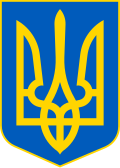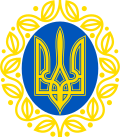
Throughout the early Middle Ages, the Rurikid knyazes of the Kievan Rus' used unique symbols to denote property rights over various items. They are depicted on punches, seals, and coins of the Rurikids. In contrast to Western European heraldry, where coats of arms belonged to entire families, or were inherited without changes by firstborn sons, Rurikid symbols were personal, with every knyaz devising an emblem of their own for themselves.
Contents
- Images of knyazes’ symbols
- Coats of arms of the Rurik Dynasty
- Coats of arms on coins and seals
- History
- Origins
- Written sources
- Decline of the personal symbols of the knyazes
- Modern usage
- Coat of arms of Ukraine
- Coats of arms of administrative divisions of Belarus
- Coats of arms of administrative divisions of Russia
- Coats of arms of armed forces of Italy
- Emblem of the NTS
- References
- Bibliography
- External links



































